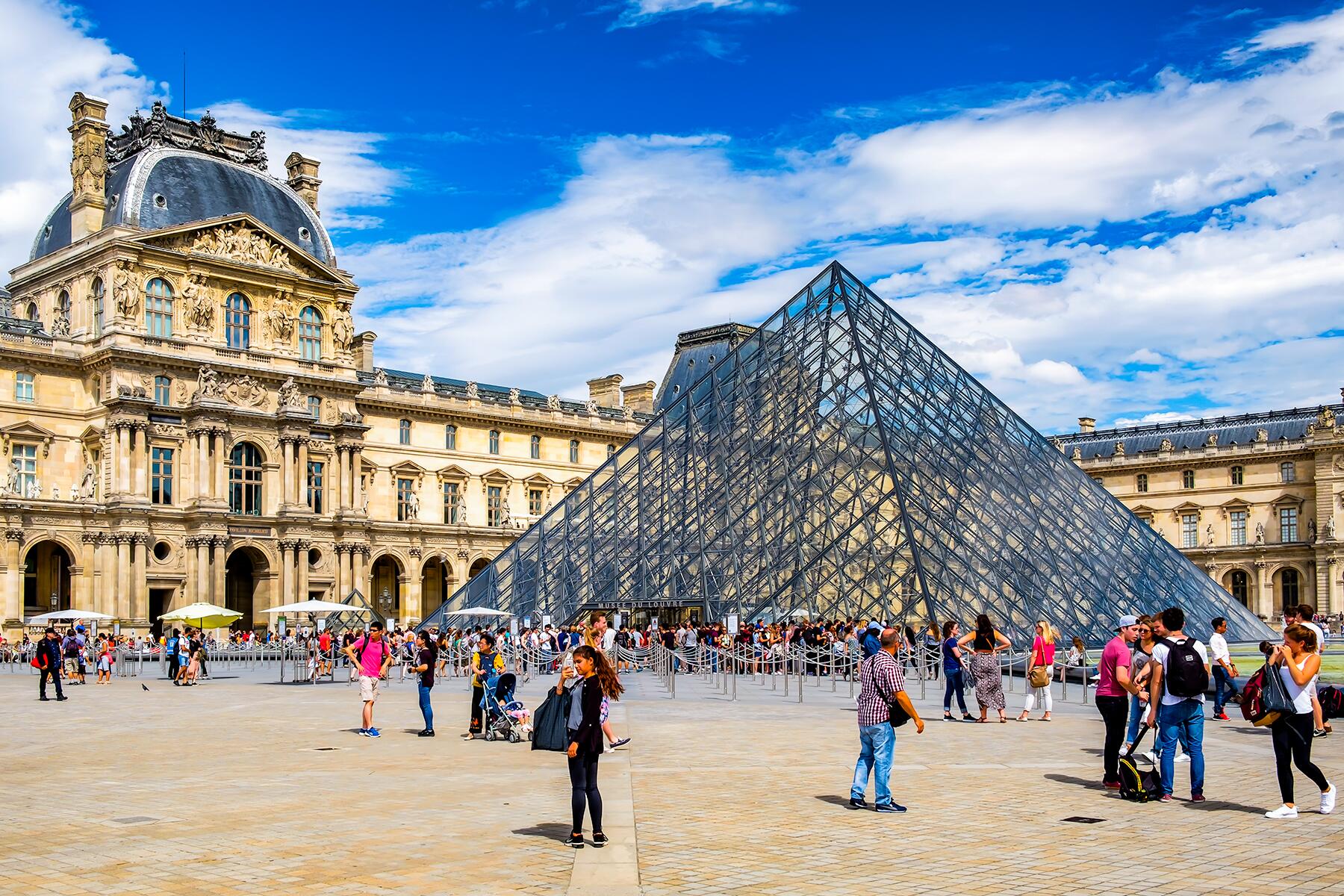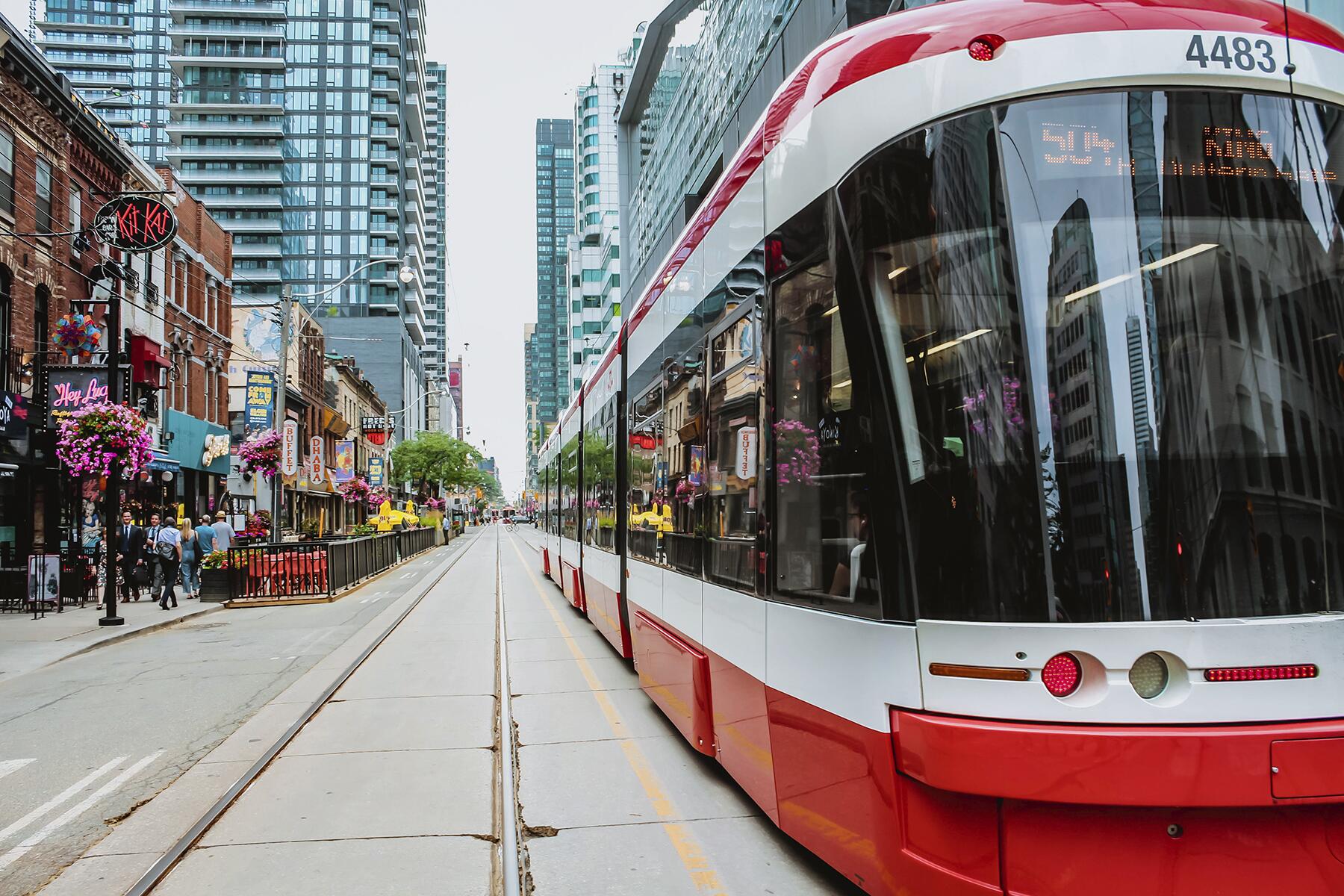Your guide to riding Toronto’s Red Rocket.
Toronto is Canada’s largest city, with a population of 2.9 million; its public transit system, the Toronto Transit Commission (TTC), is the third-largest in North America after New York City and Mexico City. An average of 2.3 million riders use the TTC per weekday, and even more impressive, the system serves the entirety of Greater Toronto, providing transportation access to an average of 578 million riders in 2022.
The Toronto Subway is a rapid transit system operating in Toronto and nearby Vaughan, Ontario. Like all big city transit systems, the TTC endures its share of delays (despite its local nickname being the “red rocket”). On the other hand, it’s remarkably easy to use.
Having traveled to dozens of international cities, and as a resident of Toronto for over 36 years, I can confirm that Toronto’s public transit system is one of the easiest to navigate, especially for first-time visitors. Here are some brief facts and tips on how to ride the TTC like a pro.
Related: The Best Things to Do in Toronto
Transit System Layout
Like many other big cities, Toronto is laid out on a grid system that stitches together a system of mini-grids. And like other cities, not all of Toronto’s streets run parallel to each other. Still, Toronto remains easy to navigate, so don’t let this greater structure intimidate you.
With bus, streetcar, and subway systems, Toronto is often hailed as an accessible and inclusive city with many options to get you to your desired location. I recommend you take the subway—or walk if you’re able and take in the sights and sounds of Toronto. Overall, it’s very easy to navigate and remarkably straightforward.
Recommended Fodor’s Video
Subway and RT Lines
Currently, the TTC’s subway runs underground with three lines running north-south and east-west. The SRT (Scarborough Rapid Transit) system is considered the line 3 but is under construction. However, the express bus services are available via an on-street bus replacement service. The Eglinton Crosstown LRT (Light-Rail Transit), owned by Metrolinx, known as Line 5, is also currently under construction and is expected to open sometime in late 2024. It is expected to run along Eglinton Avenue from Kennedy in the east and Mount Dennis in the west. Line 6 Finch West (the Finch West LRT) is also under construction.
Once you start using the subway, you’ll see how easy it is to find the right line based on your starting point and destination. The TTC has extensive route maps and schedules to help. The city maintains a heavy police presence at major stations to ensure your safety. Make sure to tap your PRESTO card when you hop on the card—although it is based on the honor system (mostly on streetcars, buses and GO Transit), the TTC performs random checks at major stations like Spadina. You can get hit with a hefty CAD 425 fine if you try to cut corners (and this includes visitors)!
Streetcars
Toronto’s streetcars aren’t as efficient as the subway, but I prefer to take in the sights when I visit a new city. Streetcars are electric vehicles powered by overhead cables, like the ones in San Francisco. Although the views are unmatched, it’s worth noting that the streetcars can get stuck in extreme traffic, and their tracks can become a major issue as the car gets stuck in the snow during the harsh Toronto winters.
GO Transit
GO Transit is a network of train and bus routes that connects to the Greater Toronto and Hamilton Area (GTHA). The GO Transit program also includes GO service routes that enable you to venture out of the Toronto metro area altogether.

Expect Delays
As in any big city, you can expect some delays. Subway trains typically run at least every 5 to 15 minutes, but delays do happen. Download the TTC app to get real-time updates so you can plan accordingly, and always give yourself extra time (maybe even 30 minutes if you can’t afford to be late).
Paying Your Fare
You can pay for your fare in any of the following ways. With cash (exact change only) if you’re getting on the bus or streetcar without connecting to the subway. Single fare for adults (CAD) is $3.35, youth (13-19) $2.40, seniors $2.30, and kids under 12 ride for free.
With a TTC ticket bought at a ticket vending machine inside subway stations with cash or credit or you can “tap” using a debit or credit card (Amex, Visa, Mastercard, Interac® debit, Visa debit, debit Mastercard, Apple Pay, or Google Pay) upon boarding.
With a PRESTO card: This reloadable card gives you the freedom to travel across 11 different transit agencies in the Greater Toronto and Hamilton Area, including the GO Transit and UP Express. This is the cheapest option, a one-ride fare on PRESTO costs $3.30 for adult admission versus $3.35 for a cash single fare. Day passes are also available at a discounted rate of $13.50.
INSIDER TIPYour card will receive a two-hour transfer automatically upon tapping it on a reader. Just make sure to use the same card for all transfers during the two-hour window; otherwise, you will incur an additional fare charge.
Where to Buy PRESTO Cards?
You can get a PRESTO card at a vending machine at any subway station. You can also purchase a PRESTO card at the local Shoppers Drug Mart location or a TTC customer service outlet. You can also order a card online from prestocard.ca. Tip: make sure to register your card number online in case you lose it, or else you’ll have to buy a new one and won’t retrieve the balance on the lost card.
Getting to and From Toronto Pearson International Airport
The UP Express, which runs from the airport to Union Station in downtown Toronto, is the easiest and cheapest way to get to and from the airport. It departs every 15 minutes and takes 25 minutes to go back and forth. Different types of tickets are available (senior, two-way, etc.), but a one-way adult fare costs approximately $12.35. The best way to pay your fare is to purchase a PRESTO card.
Attractions That Are Easily Accessible by Mass Transit
From Pearson International, I suggest hopping on the UP Express to Union Station. From there, it’s only a short 12-minute walk out to one of the seven wonders of the modern world, the CN Tower. Right next door, head to the biggest indoor aquarium in Canada, Ripley’s Aquarium of Canada, and The Rogers Centre, a versatile sports and entertainment venue perfect for sports enthusiasts and concert-goers. The Royal Ontario Museum (ROM), renowned for its collections of fine art, cultural artifacts, and natural history, is one of the largest museums in North America that can be easy to get to from Union station; just take the Yonge-University subway line to Museum Station. To get to the largest museum in all of Canada, the Art Gallery of Ontario (AGO), take the Yonge-University subway line from Union to St. Patrick’s station – it is worth checking out!
The Toronto Islands
Don’t forget about the city’s ferries! Hop on a ferry from the Jack Layton Ferry Terminal near Union Station at the base of Bay Street, south of Queens Quay. Journey to the Toronto Islands, where no cars are allowed. Bike, rollerblade, walk around, and explore the chain of islands that include the Centre, Ward’s, and Algonquin, taking in the beautiful beaches–all the islands are connected by a series of pathways and bridges.




